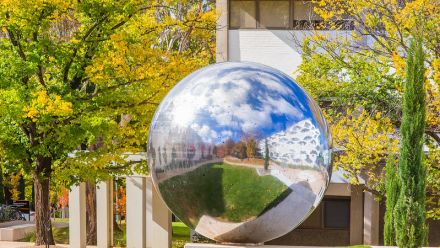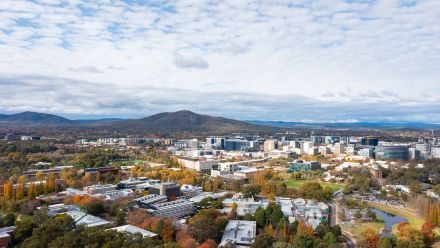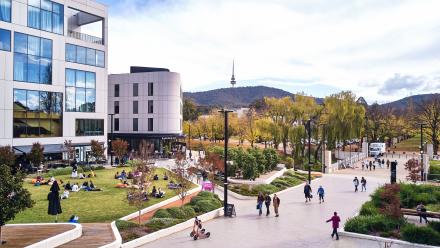Does Bridgerton fall flat as a feminist hit?
The series is largely conforming to and confirming, rather than challenging, quite conventional social norms.
When Bridgerton burst onto our screens in late 2020, it brought with it exquisite costumes, elaborate sets, and storylines filled with intrigue, gossip, sex and scandal.
At the time, it became the most-watched Netflix series ever (a title now held by Squid game), and season two has had similar success, this month breaking the streaming service's record for the most viewed English-language TV show in a week.
Executive producer Shonda Rhimes, whose credits include Grey's Anatomy, Scandal and Inventing Anna, describes the Regency-era drama as "a show ... about a lot of very interesting and complex women" and critics have reflected on Bridgerton's "feminist undertones", but is it as empowering as it seems?
There's no shortage of strong female characters, such as the powerful Queen Charlotte, independent Kate Sharma, the outspoken Eloise Bridgerton and entrepreneurial Penelope Featherington.
Bridgerton has also been praised for its diverse casting, in particular for featuring female leads of South Asian descent in season two, and the show does well to highlight female sexual pleasure, at least some of the time, ANU screen studies lecturer Dr Katharina Bonzel says.
"What is perhaps less noted is how the series is largely conforming to and confirming, rather than challenging, quite conventional social norms, such as the importance of marriage, romantic love, contemporary beauty standards and hegemonic masculinity," Bonzel says.
"The first season appeared to loudly proclaim its feminist 'credentials', in particular through characters' dialogue, while visually reaffirming the importance of normative beauty and narratively highlighting the importance of marriage."
The show is based on Julia Quinn's series of eight romance novels, which follow each of the Bridgerton siblings. Season one focuses on the eldest Bridgerton daughter, Daphne, her debut into society, and her quest to find a suitor.
"Daphne (Phoebe Dynevor) may well be lamenting that as a women all her life has been geared towards finding a husband, and that she is worth nothing if she can't find one, but in the end, she not only finds a husband, but the most attractive one, both physically, economically, and in terms of aristocratic standing," Bonzel says.
Without giving away spoilers for season two, familiar patterns emerge as Anthony, the eldest Bridgerton son, searches for a wife.
"A reformed rake grows up to be a respectable man, and a beautiful and intelligent woman civilises him," Bonzel says.
Anthony courts Edwina Sharma, the season's 'diamond'. While Edwina is hoping to find true love, her family is eager for her to secure a noble match.
But while 'marrying well' may be the goal for most of the young female characters, some have greater prospects than others when they attend the assorted extravagant social events enjoyed by the ton.
"The series is in many ways reinforcing classic normative beauty standards," Bonzel says. "For example, Daphne, season one's diamond, is thin, blonde, elegant, beautiful, and portrayed as desirable.
"The Featherington sisters, by comparison, are dark-haired, inelegant, loud, and considered undesirable. Eloise and Penelope are both smart, but marked as undesirable through being too bookish, too outspoken, or, in Penelope's case, not conforming to the perfect thin body.
"We may be cheering them on in their rebelliousness and agree with their social critique, but nothing implies that a different fate than Daphne's (to marry well) awaits them in the future - if anything it is hindered by their rebelliousness.
"In short, it's still all about being married off well. It's also intriguing that the showrunner (Chris Van Dusen) highlighted that they wanted to make a show about today, yet I am fervently hoping that today is less about marrying well..."


